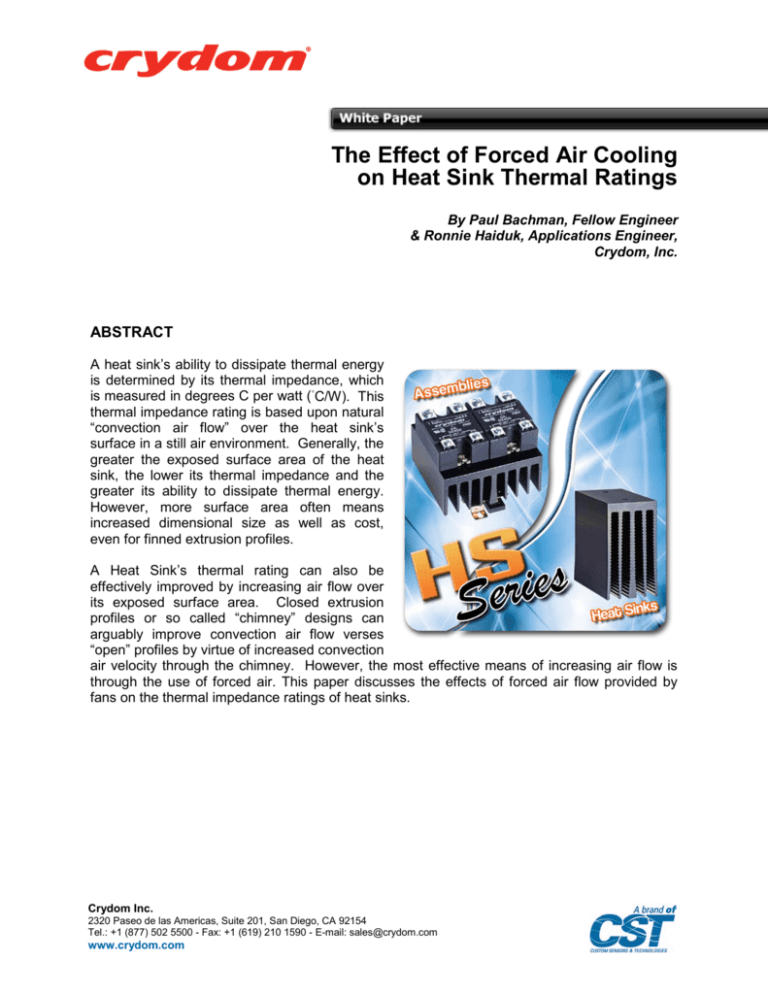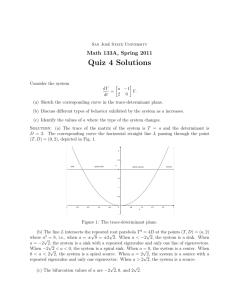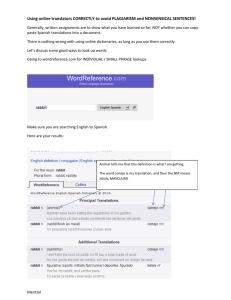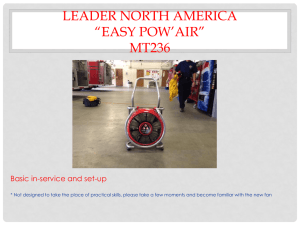
zpero 1
The Effect of Forced Air Cooling
on Heat Sink Thermal Ratings
By Paul Bachman, Fellow Engineer
& Ronnie Haiduk, Applications Engineer,
Crydom, Inc.
ABSTRACT
A heat sink’s ability to dissipate thermal energy
is determined by its thermal impedance, which
is measured in degrees C per watt (◦C/W). This
thermal impedance rating is based upon natural
“convection air flow” over the heat sink’s
surface in a still air environment. Generally, the
greater the exposed surface area of the heat
sink, the lower its thermal impedance and the
greater its ability to dissipate thermal energy.
However, more surface area often means
increased dimensional size as well as cost,
even for finned extrusion profiles.
A Heat Sink’s thermal rating can also be
effectively improved by increasing air flow over
its exposed surface area. Closed extrusion
profiles or so called “chimney” designs can
arguably improve convection air flow verses
“open” profiles by virtue of increased convection
air velocity through the chimney. However, the most effective means of increasing air flow is
through the use of forced air. This paper discusses the effects of forced air flow provided by
fans on the thermal impedance ratings of heat sinks.
Crydom Inc.
2320 Paseo de las Americas, Suite 201, San Diego, CA 92154
Tel.: +1 (877) 502 5500 - Fax: +1 (619) 210 1590 - E-mail: sales@crydom.com
www.crydom.com
INTRODUCTION
Solid State Relays dissipate power in the form of heat during their conducting state. This power
dissipation is due to the forward voltage drop of the output semiconductor and is directly
proportional to the load current. The result is an increase in the operating temperature of the
SSRs output devices (s) that must be effectively maintained in the application in order to ensure
the reliable operation of the SSR. Aluminum heat sinks, either in the form of a flat chassis panel
or extruded profile, are the most common means to achieve the thermal dissipation necessary
to reduce the SSRs internal temperature. They are therefore mandatory in most SSR
applications with load currents greater than 5 amps.
The typical range of heat sink ratings for common SSR applications is between 3.5 to 0.5 ◦C per
watt depending upon load current and ambient temperature. For reference, a flat aluminum
plate 2 ft square and .125” thick has a thermal impedance rating of approximately 0.5 ◦C per
watt. Its exposed surface area (ignoring the edges) is approximately 1152 square inches or
7435 cm2. A finned aluminum extrusion of the same thermal rating measures approximately 6”
x 6” x 3.5” with an exposed surface area of 694 in2 or 4480 cm2. Why the difference in surface
area to produce the same thermal rating?
The answer is that the extruded aluminum heat sink is more efficient than the flat plate because
of 2 main factors:
1. The extrusion’s design places the source of the thermal energy (the SSR) nearer to the
majority of the heat sink’s surface area. The effectiveness of surface area to dissipate
energy decreases as the distance from the source increases. In the case of the flat
plate, some of the plate is as much as 1.4 ft from the SSR, where as for the extrusion
the greatest distance is no more than 0.5 ft.
2. The design of the extrusion’s fins promotes convection air flow due to their parallel
placement. Although this example is technically an “open” design and therefore not a
“chimney”, convection air flow over the fins is substantially greater than the airflow
across the flat plate.
Thus the configuration of the heat sink combined with air flow over its surface can substantially
alter the effectiveness of a heat sink.
EFFECT OF FORCED AIRFLOW ON HEAT SINK RATINGS
The primary function of a Heat Sink is to absorb thermal energy
generated by a component mounted to its surface and then to dissipate
that thermal energy into the surrounding ambient air. For free air
convection cooling, surface area and free air flow volume are the primary
factors in the heat sinks efficiency as can be seen by the example sited
above. Increasing either or both improves the heat sink’s efficiency and
reduces its thermal impedance accordingly.
Heat Sink surface area can be increased by adding more fins/material to the extrusion profile,
but this usually increases size, weight and cost. Thus free air flow can be modestly increased by
Crydom Inc.
2320 Paseo de las Americas, Suite 201, San Diego, CA 92154
Tel.: +1 (877) 502 5500 - Fax: +1 (619) 210 1590 - E-mail: sales@crydom.com
www.crydom.com
design (chimney verses open design) as well as total surface area. However, airflow can be
increased substantially by forced air from the addition of fans.
Depending upon several factors including volumetric considerations, fans may provide favorable
performance to cost gains. In other words, the additional cost of a fan may be offset by the
reduction in size and cost of the heat sink and assembly. However, in higher power
applications, fans may provide the only means available to achieve the level of power density
required.
CALCULATING THE EFFECT OF FORCED AIR COOLING ON HEAT SINK RATINGS
Fans are commonly rated in CFM (cubic feet per minute) of
airflow. However, the parameter used to calculate the impact of
forced air on a heat sink rating is LFM (linear feet per minute).
The following formula can be used to convert CFM to LFM:
LFM = CFM / area (ft²)
The manufacturer’s CFM rating is based upon the amount of air
that is moved through the fan’s external box size, and therefore
“area” corresponds to the “footprint” the fan makes when
mounted. If the fan is round, then the area can be calculated
based upon its external diameter (d) as follows:
Area (ft²) = π (d/2)2
where π = 3.1416 and d is in feet
If the fan is square, then the area can be calculated based upon is external dimensions as
follows:
Area (ft²) = l x w
Where l and w are the fan’s external length and width in feet
Fans are often sized in millimeters, so to calculate area in square feet, the size in millimeters
needs to be converted to feet as follows:
1 millimeter = .00328 ft.
Crydom Inc.
2320 Paseo de las Americas, Suite 201, San Diego, CA 92154
Tel.: +1 (877) 502 5500 - Fax: +1 (619) 210 1590 - E-mail: sales@crydom.com
www.crydom.com
The following 2 tables summarize various CFM ratings converted to LFM values for example
fans sized in millimeters:
CFM
5.2
6.5
7.8
14.8
15.9
17.6
21.7
22.1
27.0
34.4
36.0
37.0
41.7
42.5
76.0
78.0
105
115
117
40 mm Fan
LFM
302
377
453
60 mm Fan
LFM
80 mm Fan
LFM
92 mm Fan
LFM
120 mm Fan
LFM
382
410
454
560
570
392
499
395
406
605
617
490
503
742
755
755
Table 1: CFM to LFM for various size fans.
(Fan specifications courtesy CST/Crouzet)
Note: Fan CFM ratings are normally based upon free air delivery and zero back pressure.
Most applications will present some degree of back pressure and thus limit the net airflow to
some extent. Therefore, it is recommended that the CFM rating be multiplied by a correction
factor, typically 0.6 (60%) to 0.8 (80%) to account for this restriction. Table 2 shows adjusted
CFM values and resulting LFM ratings based upon the 80% correction factor.
Crydom Inc.
2320 Paseo de las Americas, Suite 201, San Diego, CA 92154
Tel.: +1 (877) 502 5500 - Fax: +1 (619) 210 1590 - E-mail: sales@crydom.com
www.crydom.com
CFM
4.2
5.2
6.2
11.8
12.7
14.1
17.4
17.7
21.6
27.5
28.8
29.6
33.4
34.0
60.8
62.4
84.0
92.0
93.6
40mm Fan
LFM
242
302
362
60 mm Fan
LFM
80 mm Fan
LFM
92 mm Fan
LFM
120 mm Fan
LFM
306
328
363
448
456
314
399
316
325
484
494
392
403
542
594
604
Table 2: Corrected CFM to LFM for various size fans (using 0.80 factor).
Once the fan’s LFM value is calculated, the improvement that it has on the heat sink’s thermal
impedance rating is calculated by multiplying a correction factor per Table 3 below times the
heat sink’s free air convection thermal resistance rating.
LFM
100
200
300
400
500
600
700
800
900
1000
Adjustment Factor
0.757
0.536
0.439
0.378
0.338
0.309
0.286
0.268
0.252
0.239
Table 3: Thermal Impedance Adjustment Factor based upon LFM value.
(Adjustment factor data courtesy Aavid Thermalloy)
Using the Table 1 above, a 60mm, 15.9 CFM fan converts to 410 LFM. The corrected LFM
value from Table 2 for the same fan is 328. To determine the effect of this fan on a heat sink’s
thermal impedance rating in °C/W, multiply the free air convection rating of the heat sink by the
correction factor of .439 (correction factor for 300 LFM). For example, if the heat sink’s free air
Crydom Inc.
2320 Paseo de las Americas, Suite 201, San Diego, CA 92154
Tel.: +1 (877) 502 5500 - Fax: +1 (619) 210 1590 - E-mail: sales@crydom.com
www.crydom.com
rating is 2.0 °C/W, the forced air rating with this fan is approximately 0.88 °C/W, a substantial
increase in thermal efficiency.
Note: the adjustment factors in Table 3 can be calculated more precisely for LFM ratings which
fall between the values listed in the table by interpolation. The correction factor for 328 LFM is
actually .422 which would result in a thermal impedance in the above example of 0.84 °C/W.
SOME PRECAUTIONS THAT SHOULD BE CONSIDERED WHEN FANS ARE
UTILIZED TO IMPROVE THE THERMAL PERFORMANCE OF HEAT SINKS
1. When forced air cooling with a fan is utilized, the air supply should be free of any oil,
grease, water or any contaminant that can adhere to the fan blades or heat sink fins and
diminish their heat dissipation efficiency.
2. Fans come in a variety of versions. Care needs to be taken that a fan with a life
expectancy suitable for the intended application is chosen. Generally, only ball bearing
fans should be specified if the reliability of the SSR/Heat Sink assembly depends upon
the fan’s continuing function.
3. When forced air cooling is utilized, it is advisable to install an over temperature cut off
switch on the heat sink that is wired in series with the SSRs input. The temperature
rating of the cutoff switch should be slightly higher than the maximum temperature of the
heat sink during normal operation with the fan. Therefore, the switch will remove power
from the input of the SSR if the temperature of the heat sink increases due to a failure of
the fan (or other causes).
4. Each heat sink will react differently to forced air and the heat sink manufacturer should
be consulted to determine the improvement in thermal rating in °C/W based upon their
experience with forced air flow.
CONCLUSIONS
Forced airflow is not always required to effectively manage the temperature of a solid state relay
mounted to a finned heat sink. The temperature can often be maintained through normal
convection airflow due to low ambient temperatures, minimal power dissipation of the relay, low
duty cycles, or other mitigating circumstances. However, in some cases the use of forced airflow
may provide a cost-effective means to reduce the size of a heat sink assembly. In other cases,
forced airflow may be the only means available to effectively manage the heat of a solid state
relay due to high power dissipation or conditions of the application’s environment.
Regardless, it is imperative that all specifications are reviewed and confirmed through
evaluation to ensure that the relay operates within it’s given parameters. Failure to adhere to the
relays and/or heat sinks specifications, or to confirm the effectiveness of the forced airflow on
the performance of the assembly, can result in failure of the SSR.
Crydom Inc.
2320 Paseo de las Americas, Suite 201, San Diego, CA 92154
Tel.: +1 (877) 502 5500 - Fax: +1 (619) 210 1590 - E-mail: sales@crydom.com
www.crydom.com
Crydom offers tools on its web site and assistance through it Applications Engineering
Department to determine the minimum heat sink rating required for any given SSR application.
Visit www.crydom.com for contact information.
++++++++++++++++++++++++++++++++++++++++++++++++++++++++++++++++++
Copyright © 2011 Crydom Inc., All rights reserved.
The materials and information on this document are intended for informational purposes only. Materials
are copyrighted and are protected by worldwide copyright laws and treaty provisions. They may not be
copied, reproduced, modified, published, uploaded, posted, transmitted, or distributed in any way, without
Crydom's prior written permission. Crydom does not warrant the accuracy or completeness of the
information, text, graphics, links or other items contained within this document. Crydom may make
changes to these materials, or to the products described therein, at any time without notice. Crydom
makes no commitment to update the Materials.
Crydom Inc.
2320 Paseo de las Americas, Suite 201, San Diego, CA 92154
Tel.: +1 (877) 502 5500 - Fax: +1 (619) 210 1590 - E-mail: sales@crydom.com
www.crydom.com







